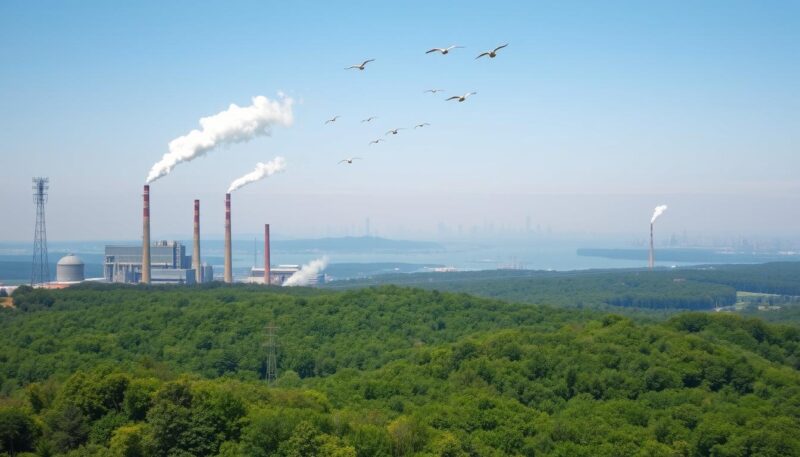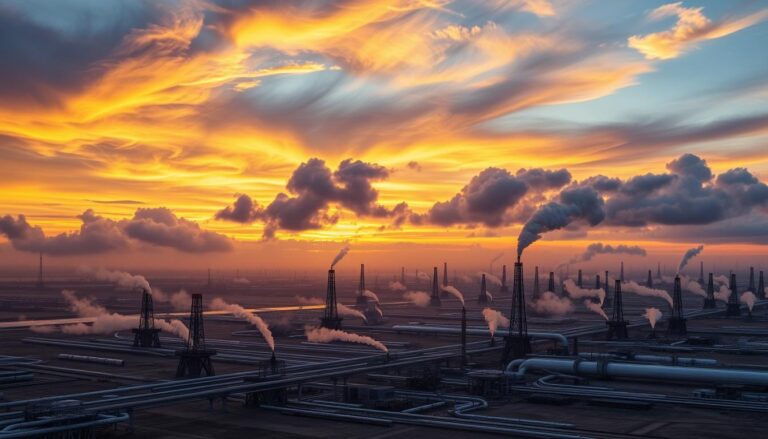In the context of environmental protection and sustainable practices, understanding fugitive emissions is crucial. You may be wondering, what are fugitive emissions exactly? Well, these are gases that unintentionally escape into the atmosphere during various industrial processes, particularly in energy sectors. Often overlooked, fugitive emissions in the energy industry can contribute significantly to total greenhouse gas emissions, accounting for about 10% in some cases. As businesses pivot towards a more holistic view of sustainability, addressing these emissions has become a priority, and for good reason.
Why should you care about these seemingly insignificant leaks? The implications are vast, affecting not only environmental health but also public safety and economic stability. Fugitive emissions encompass a range of gases, including methane, carbon dioxide, and refrigerants like hydrofluorocarbons (HFCs), some of which have global warming potentials thousands of times greater than that of carbon dioxide. With the recent surge in regulatory focus on greenhouse gas emissions, including those governed under the Clean Air Act, it’s essential for individuals and organizations alike to grasp why fugitive emissions matter and what steps can be taken to minimize their impacts on both local environments and global climate patterns.
Understanding Fugitive Emissions
Fugitive emissions are a significant concern within various industries, especially in the context of climate change. To grasp their implications, it is essential to understand their definition and identify common sources that contribute to this environmental issue.
Definition of Fugitive Emissions
Fugitive emissions refer to unintentional gas releases that occur during industrial processes. Unlike controlled emissions that are managed and monitored, these emissions happen due to leaks or discharges from machinery and infrastructure. They evade detection, making fugitive emissions control a challenging task. For instance, emissions leaks in the energy sector often arise from equipment failures or dysfunctional seals, leading to significant environmental consequences.
Common Sources of Fugitive Emissions
Various sources contribute to fugitive emissions, predominantly in the oil and gas industry. The following table outlines the primary sources and their implications:
| Source | Description | Impact |
|---|---|---|
| Natural gas venting | Deliberate release of natural gas during drilling and production | Contributes to climate change; methane’s global warming potential is 28 times higher than CO2 |
| Flaring | Burning off excess natural gas at oil production sites | Releases CO2 and contributes to local air pollution |
| Accidental releases | Leaks from pipelines, valves, and equipment failures | Increases greenhouse gas emissions; 60% of leaks originate from valves |
| Storage losses | Gas escaping from storage facilities | Reduces efficiency; contributes to emissions leaks in the energy sector |
Given the significant impact of fugitive emissions, regulatory frameworks are increasingly focusing on fugitive emissions and environmental regulations. Employing leak detection and repair (LDAR) programs, including technologies such as drones and infrared cameras, can enhance monitoring and control. Addressing these emissions not only supports compliance but also promotes a healthier environment.
What Are Fugitive Emissions and Their Environmental Impact?
Understanding the environmental impact of fugitive emissions is vital for addressing climate change. These emissions, primarily composed of greenhouse gases like methane, escape from various industrial processes, affecting air quality and contributing to global warming. Industries such as oil and gas, agriculture, and chemical manufacturing are significant sources of these emissions, which are crucial to examine for effective mitigation strategies.
Contributions to Climate Change
The role of fugitive emissions in climate change cannot be overstated. Methane, for instance, is a potent greenhouse gas, trapping heat more effectively than carbon dioxide. This phenomenon makes the oil and gas sector a major contributor to the problem, where leaks occur during extraction, processing, and transportation. The environmental impact of fugitive emissions extends beyond just greenhouse gases, emphasizing the need for robust regulatory frameworks such as those from the U.S. Environmental Protection Agency (EPA) to monitor and manage emissions effectively.
Health Effects and Air Quality
Fugitive emissions significantly influence air quality, with serious health implications. For example, volatile organic compounds (VOCs) from chemical manufacturing can cause respiratory issues and other health problems. The EPA has reported that ethylene oxide leaks from specific facilities have been linked to increased cancer risks. There are ongoing concerns about ammonia released from agricultural practices, which can lead to environmental hazards. Reducing fugitive emissions is essential not only for the health of the planet but also for protecting public health.

Conclusion
Understanding why fugitive emissions matter is crucial for both environmental protection and public health. These emissions, primarily methane, contribute significantly to climate change, exacerbating the global temperature rise. The statistics reveal a staggering reality: methane released from the U.S. oil and gas industry alone equates to the emissions from approximately 70 million cars. With the Global Warming Potential of methane being 25 times more potent than CO2 over a century, the urgency to address this issue cannot be overstated.
Industries are increasingly under pressure to adopt better practices for monitoring fugitive emissions. The call for improved leak detection and repair systems is not just a regulatory compliance measure; it is a pathway to substantial environmental benefits. Research indicates that routine maintenance can lead to reductions of up to 90% in volatile organic compound emissions, and repairing leaks in the oil and gas sector could save an estimated $1.8 billion annually.
As we work toward reducing fugitive emissions, embracing technological innovations and aligning corporate practices with environmental regulations will play a pivotal role in creating a healthier planet. The interconnectedness of industrial activities and environmental stewardship highlights that protecting air quality and mitigating climate change are not just goals, but responsibilities we must shoulder together.

